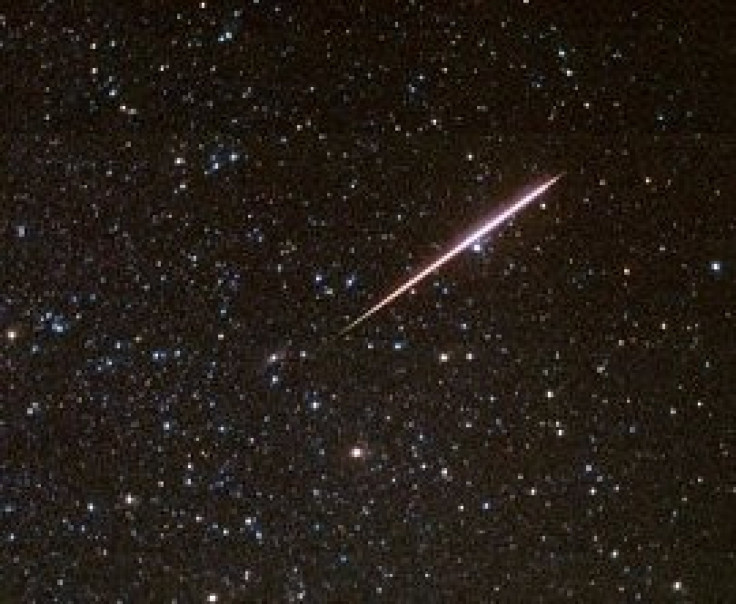Annual Perseid Meteor Shower to Peak Friday but Start Watching From Today

The annual Perseid meteor shower, which is caused by debris from Comet Swift-Tuttle and observed for about 2000 years, will be at peak coming Friday and Saturday. There might be some serious hamper for viewers due to the full moon on Saturday.
Perseid shower normally peaks at 100 or more meteors per hour in the absence of moonlight on new moon (when the moon is between the Sun and the Earth), which is not visible from Earth as the side of the moon that is facing us is not being lit by the sun.
And the peaking rate is the greatest in the pre-dawn hours, since the side of Earth nearest to turning into the sun scoops up more meteors as Earth moves through space.
The full moon, which happens when Earth comes between the sun and the moon, falls on August 13 and is also called 'Grain Moon' or 'Green Corn Moon'. At the full moon, the moon rises about the same time the sun sets and it sets at about the same time the sun rises. This will create difficulty in viewing the Perseid meteor shower.
Bright moonlight will flood the sky all through the entire night and will certainly play havoc for those observing the Perseid meteor shower during its peak on Aug. 12 and 13.
Despite the brightness of the moon, amateur astronomers are suggesting sky-watchers to look for meteors in the early morning mostly after 3 a.m. on Aug. 8, 9 and 10. This is because the moon will set about 2.5 hours early on Tuesday before the sun rises but this will shrink to 1.5 hours on Wednesday and less than half hour by Thursday.
A meteor shower is a celestial event in which a number of meteors are seen radiating the night sky. Most meteors are smaller than a grain of sand, and almost all of them disintegrate and never hit Earth's surface.
Intense or unusual meteor showers are known as meteor outbursts and meteor storms, which may produce greater than 1,000 meteors an hour, according to a Cambridge University research study.
Meteor showers are the result of a passing comet. As the comet approaches and rounds the Sun, it sublimates (turns from a solid directly into a gas, like dry ice), creating a cloudy sphere, called the coma, around the nucleus. The solar wind pushes on the coma forming the long comet’s tail, which always points away from the Sun.
The Perseids are so-called because the point they appear to come from, called the radiant, lies in the constellation Perseus. The name derives in part from the word Perseides, a term found in Greek mythology referring to the sons of Perseus.
The stream of debris is called the Perseid cloud and stretches along the orbit of the comet Swift-Tuttle. Every 133 years the huge comet swings through the inner solar system and leaves behind a trail of dust and gravel.
Although the comet is nowhere near Earth, its tail does intersect Earth's orbit. Tiny bits of comet dust that hit Earth's atmosphere travel 140,000 miles per hour.
At that speed, even a smidgen of dust makes a vivid streak of light--a meteor--when it disintegrates. As Swift-Tuttle's meteors fly out of the constellation Perseus, they are called Perseids.
Some Catholics refer to the Perseids as the "tears of St. Lawrence", since August 10 is the date of that saint's martyrdom. In 2009, the estimated peak Zenithal Hourly Rate was 173, but fainter meteors were washed out by a waning gibbous moon.
The Perseid meteor shower will be followed by the Geminids during mid-December and Quadrantids during January, which are the only major meteor showers not originating from a comet, according to NASA.
© Copyright IBTimes 2024. All rights reserved.











